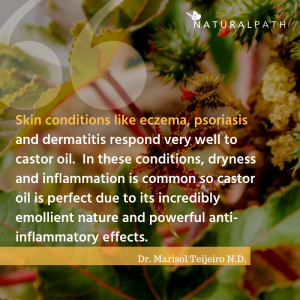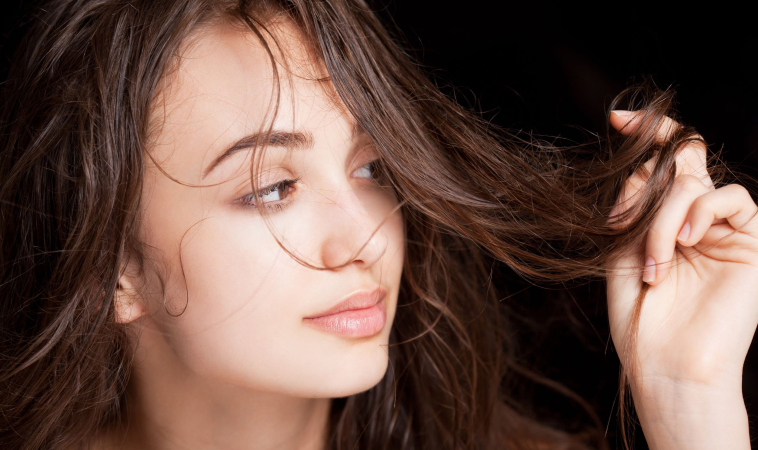Mediterranean Goddesses, Roman Empresses and Egyptian Queens… what do they all have in common? They were all revered for their striking beauty, and they all shared a beauty secret that enhanced their natural fairness. What was their secret?
The ‘divine oil’ and ‘magical oil’ for a reason
This oil, also known as the ‘divine oil’ and the ‘magical oil’ is still widely used today. It’s a common ingredient in cosmetics, serums, hair, and skin products. Its eminence has withstood the test of time for centuries, sparking the interest of doctors, scientists and cosmeticians alike. In recent years its distinction has been scientifically studied with astonishing results. It’s no surprise that this oil reigns as the queen of oils for skin, hair, nails, and even oral health. Are you dying to know what it is? Well my friend, it’s castor oil. Now let’s dive in!
Our Definition of Beauty
In different parts of the world and over different periods of time, our ideals of beauty are unique and constantly changing. However, a common truth in almost all cultures, is that looking healthy typically means looking beautiful. Bright eyes, an attractive smile, thick, shiny hair and glowing skin are all focal points of attractiveness in humans, and can also be visual indicators of overall health in the body. In our modern society, there is an entire industry dedicated to enhancing and embellishing these features to look and feel more attractive.
I posit that this is one of the reasons castor oil has been used for beauty by so many different cultures for so long – it is incredibly versatile and it benefits the health of all of these focal points of beauty.
History Of Use of Castor Oil For Beauty
A study done on Egyptian Ptolemeic mummies dating back to 100 BC, detected traces of castor oil in many of the samples, suggesting its use as a mummification/preservation agent.[1] It is said that the Egyptian Queen Cleopatra used it to whiten the whites of her eyes.
Hippocrates and Galen, two prominent Greeks in the advent of modern medicine, studied castor oil for its beneficial effects on eye, skin and oral health.[2] It is used in many different cultures around the world for cosmetic and therapeutic reasons[3], which we will discuss further in this article.
Skincare Extraordinaire
When your insides are healthy, your outsides reflect it. Your skin is the largest organ of your body, and when it’s clear and glowing, it is noticeably beautiful. The cosmetic industry is absolutely flooded with skincare products – wrinkle creams, acne cleansers, blemish spot treatments, you name it! Unfortunately the majority of these products contain toxic, under-researched chemicals that have a negative impact on our immune, hormonal and nervous systems.[4]
Castor oil is a versatile, safe, natural and effective oil for skincare that has no negative side effects. It contains a number of skin-nourishing nutrients like omega 6 and 9, vitamin E, amino acids and flavonoids.[5] It’s antibacterial, antioxidant, anti-fungal and anti-inflammatory.
All of the above qualities make castor oil super beneficial for acne and dry skin. Many conventional cleansers strip our skin of its natural oils and leave it prone to bacteria and dryness. When you wash with castor oil, it preserves your skin’s natural moisture barrier and lifts impurities.
How to Do a Castor Oil Face Wash:
- Take a warm cloth and drape it over your face, opening your pores
- Take a dollop of organic castor oil from a GLASS bottle, rub it between your hands, and blot it all over your face
- Allow all the moisturizing, nourishing goodness to absorb into your skin for a minute or two
- Then rinse, using the same warm cloth to remove any excess
**Castor oil is excellent at removing make-up and is safe to use around the eyes.
Skin conditions like eczema, psoriasis and dermatitis respond very well to castor oil. In these conditions, dryness and inflammation is common so castor oil is perfect due to its incredibly emollient nature and powerful anti-inflammatory effects.[6]
It can also be used for the following
It can also be used for plantar warts and fungal infections by creating a paste. Simply combine castor oil, baking soda and 1-3 drops of tea tree essential oil. The paste can be applied daily to affected skin or nails and will keep in a glass jar for months.
Another common use for this legendary oil is fading scars, stretch marks and age spots – just apply it straight up (with clean hands) and take care not to get it onto any valuable fabrics as it WILL stain!
Smile Saver
A smile is contagious! In the modern age we see many different treatments and procedures in the pursuit of the ‘perfect’ smile – braces, Invisalign, teeth whitening, veneers… Perhaps this is because as we age, our smiles start to deteriorate. Cavities, yellowing teeth and receding gums all become more common. So what can we do naturally to keep our pearly whites healthy?
An Ayurvedic practice known as oil pulling helps preserve the health of our smile. Typically it’s done with sesame or coconut oil, swishing for 20 minutes then spitting it out. Recent studies done in periodontal medicine compared castor oil to conventional denture cleaners, and it was found to be extremely effective in vivo (in the human body) at breaking down biofilm[7] [8] [9] (think of that fuzzy feeling you get on your teeth if you forget to brush). It helps get rid of bad breath, nourishes the gums, may whiten teeth, and balances the microbiome in the mouth – plus it only needs to be done for 2 minutes a day to get these benefits!
How to Use Castor Oil for Oil Pulling:
- Take 2 tsp of organic castor oil from a GLASS bottle in your mouth
- Swish for 2 minutes
- Spit the oil out (not into your sink since oil can clog drains)
- Rinse and repeat daily – can be done before or after brushing your teeth
Eye Enhancer
They say the eyes are the window to the soul, and perhaps this is why there is such an emphasis in our society on wanting beautiful eyes. So many of us use mascara, eyeliner, eye shadow, or more semi-permanent treatments like microblading and eyelash extensions, to showcase and enhance this feature.
Again, with these cosmetic products there are often toxic chemicals that we don’t want to be absorbing into our precious peepers!
It is said that the famed Egyptian Queen, Cleopatra, used it to brighten the whites of her eyes. This could’ve been one of the earliest forms of anti-aging treatments, as yellowing/darkening of the sclera of the eyes is a sign of the aging process.[10]
Its use for eye health dates back as far as 1550 BC in the Eber’s Papyrus[11], a prominent Egyptian medical document of herbal knowledge. It’s also widely used in India for the health of the cornea[12], and has been studied as an effective treatment for dry eyes, as in Meibomian gland dysfunction.[13] A study on rat lenses shows that castor oil preserves the very important antioxidant, glutathione, in the eyes.[14]
Today castor oil is commonly found as an ingredient in many anti-wrinkle and eye creams. The skin around the eyes is very fragile and sensitive and we should be careful what products we are allowing so close to our delicate eyes. Castor oil is 100% safe to use around and in the eyes.
How to Use Castor Oil for Wrinkles, Puffiness and Dark Circles:
- After washing your face and hands, dab a small amount of organic castor oil from a glass bottle around the eyes
- Cover with an organic cotton eye mask and leave on overnight for best results
The same goes for eyelash and eyebrow growth serums – you’ll commonly find castor oil hanging out in the ingredient list. But why make it complicated? It’s perfectly nourishing and anti-inflammatory on its own – less is more, am I right?!
How to Use Castor Oil for Eyelash or Eyebrow Growth:
- Using a clean applicator brush for lashes and brows, dip into organic castor oil (from a glass bottle)
- Use the brush to comb oil through eyelashes and brows, being sure to get the roots
- For best results, do this nightly before bed and cover with an organic cotton eye mask – leave on overnight
So we know that it’s commonly used to help get long, luscious lashes and thick, beautiful brows, but how does this work? Let’s take a look at how it’s used for hair on your head too.
Hair Helper
Long hair, don’t care! Is this what you long for? There are endless hair products in the cosmetic industry for lengthening, thickening and increasing shine – they come in the form of shampoos, hot oil treatments, leave-in conditioners… you can also get perms, hair extensions or opt for a wig… the list goes on and on. Unfortunately many of these products have unnatural compounds in them that aren’t so good for our insides, and sometimes leave our hair even more damaged and dried out than before.
Castor oil has been used for centuries as a treatment for hair loss (alopecia) and male pattern baldness, and is popularly used in Myanmar for increasing thickness.[15]There are so many testimonials on using this oil for hair growth, but I have yet to find even one study on it! So why do so many people use it for this reason? Well, looking at the research that does exist, I can make a hypothesis on its mode of action.
In some cases, hair loss is caused by inflamed hair follicles. Castor oil applied to the scalp can reduce inflammation[16] of the follicle, and also increase blood flow to the area via nitric oxide.[17] Plus it provides growth supportive nutrients like vitamin E and omegas.[18]
These qualities also make it a wonderful treatment for dandruff that is caused by a fungus known as Malassezia, as nitric oxide is a strong anti-yeast and anti-fungal agent.[19]
How to Use Castor Oil for Dandruff and Hair Growth (Short Hair):
- Rub organic castor oil from a glass bottle into hair daily, (use like a hair gel)
- If bald, rub organic castor oil directly into the scalp daily
How to Use Castor Oil for Dandruff and Hair Growth (Long Hair):
- Apply organic castor oil from a glass bottle to hair (make sure to get the roots)
- Cover with a shower cap and wear treatment overnight, once a week
Quality Control For Castor Oil
As mentioned in this article, castor oil should always be organic, cold-pressed and extra virgin, as well as hexane-free, 100% pure and bottled in GLASS. Castor oil’s unique chemical structure makes it a magnet for toxic lipophilic components of plastic, such as BPA[20], slip agents[21] or UV filters[22]. For this reason, please never use castor oil that comes in a plastic bottle. It is hypothesized that castor oil has the ability to pass the dermis and enter the epidermis (the second layer of skin) where our blood and lymph vessels lie – where we definitely don’t want toxins!
Hypersensitivity Reactions
In very rare cases, a hypersensitivity reaction may occur with castor oil, in which case you should discontinue use immediately. This is most often seen when it is used in combination formulas[23]. Always patch test a small area of skin before using any new substances on your body to make sure.
I hope that this article has broadened your horizons on the use of this ever-versatile oil. I believe it should be a staple in everyone’s beauty cabinet, because not only does it make you look great, it works on the health of your body to make you feel great, too!
Read Part 2 of this series here.
Read Part 1 of this series here.
References:
[1] Tchapla A1, Méjanelle P, Bleton J, Goursaud S.Characterisation of embalming materials of a mummy of the Ptolemaic era. Comparison with balms from mummies of different eras.J Sep Sci. 2004 Feb;27(3):217-34.
[2] Lukong KE1 Understanding breast cancer – The long and winding road. BBA Clin. 2017 Jan 27;7:64-77. doi: 10.1016/j.bbacli.2017.01.001. eCollection 2017 Jun.
[3] Marwat SK1, Rehman F2, Khan EA1, Baloch MS1, Sadiq M1, Ullah I1, Javaria S1, Shaheen S1. Review – Ricinus cmmunis – Ethnomedicinal uses and pharmacological activities.Pak J Pharm Sci. 2017 Sep;30(5):1815-1827.
[4] A. PANICO,1 F. SERIO,1 F. BAGORDO,1 T. GRASSI,1 A. IDOLO,1 M. DE GIORGI,1 M. GUIDO,1,2 M. CONGEDO,3 and A. DE DONNO Skin safety and health prevention: an overview of chemicals in cosmetic products. J Prev Med Hyg. 2019 Mar; 60(1): E50–E57. Published online 2019 Mar 29. doi: 10.15167/2421-4248/jpmh2019.60.1.1080 PMID: 31041411
[5] Marwat SK, Rehman F, Khan EA, Baloch MS, Sadiq M, Ullah I, Javaria S, Shaheen S. Review – Ricinus cmmunis – Ethnomedicinal uses and pharmacological activities.Pak J Pharm Sci. 2017 Sep;30(5):1815-1827.
[6] Vieira C et al. .Effect of ricinoleic acid in acute and subchronic experimental models of inflammation. Mediators Inflamm. 2000;9(5):223-8
[7] Andrade IM1, Andrade KM2, Pisani MX1, Silva-Lovato CH1, de Souza RF1, Paranhos Hde F1.Trial of an experimental castor oil solution for cleaning dentures. Braz Dent J. 2014 Jan-Feb;25(1):43-7.
[8] Badaró MM, Salles MM, Leite VMF, Arruda CNF, Oliveira VC, Nascimento CD, Souza RF, Paranhos HFO, Silva-Lovato CH. Clinical trial for evaluation of Ricinus communis and sodium hypochlorite as denture cleanser.J Appl Oral Sci. 2017 May-Jun; 25(3):324-334.
[9] Salles MM, Badaró MM, Arruda CN, Leite VM, Silva CH, Watanabe E, Oliveira Vde C, Paranhos Hde F. Antimicrobial activity of complete denture cleanser solutions based on sodium hypochlorite and Ricinus communis – a randomized clinical study.J Appl Oral Sci. 2015 Nov-Dec; 23(6):637-42.
[10] Russell R1, Sweda JR1, Porcheron A2, Mauger E. Sclera color changes with age and is a cue for perceiving age, health, and beauty. Psychol Aging. 2014 Sep;29(3):626-35. doi: 10.1037/a0036142.
[11] Franke H1, Scholl R2, Aigner A3. Ricin and Ricinus communis in pharmacology and toxicology-from ancient use and “Papyrus Ebers” to modern perspectives and “poisonous plant of the year 2018”. Naunyn Schmiedebergs Arch Pharmacol. 2019 Oct;392(10):1181-1208. doi: 10.1007/s00210-019-01691-6. Epub 2019 Jul 29.
[12] Prajna NV1, Pillai MR, Manimegalai TK, Srinivasan M. Use of Traditional Eye Medicines by corneal ulcer patients presenting to a hospital in South India.Indian J Ophthalmol. 1999 Mar;47(1):15-8.
[13] Goto E1, Shimazaki J, Monden Y, Takano Y, Yagi Y, Shimmura S, Tsubota K. Low-concentration homogenized castor oil eye drops for noninflamed obstructive meibomian gland dysfunction.Ophthalmology. 2002 Nov;109(11):2030-5.
[14] Holm T, Brøgger-Jensen MR, Johnson L, Kessel L.Glutathione preservation during storage of rat lenses in optisol-GS and castor oil. PLoS One. 2013 Nov 19;8(11):e79620. doi: 10.1371/journal.pone.0079620. eCollection 2013.
[15] Robert A. DeFilipps1 and Gary A. Krupnick2 The medicinal plants of Myanmar
[16] The University of Manchester, Salford Royal NHS Foundation Trust, Salford, UK Alopecia in general medicine Clin Med (Lond). 2016 Feb; 16(1): 74–78. doi: 10.7861/clinmedicine.16-1-74 PMCID: PMC4954340
[17] Mascolo N1, Izzo AA, Autore G, Barbato F, Capasso F.Nitric oxide and castor oil-induced diarrhea.J Pharmacol Exp Ther. 1994 Jan;268(1):291-5.
[18] Marwat SK, Rehman F, Khan EA, Baloch MS, Sadiq M, Ullah I, Javaria S, Shaheen S. Review – Ricinus cmmunis – Ethnomedicinal uses and pharmacological activities.Pak J Pharm Sci. 2017 Sep;30(5):1815-1827.
[19] Stasko N1, McHale K2, Hollenbach SJ2, Martin M2, Doxey R2. Nitric Oxide-Releasing Macromolecule Exhibits Broad-Spectrum Antifungal Activity and Utility as a Topical Treatment for Superficial Fungal Infections. Antimicrob Agents Chemother. 2018 Jun 26;62(7). pii: e01026-17. doi: 10.1128/AAC.01026-17. Print 2018 Jul.
[20] Hafezi SA1, Abdel-Rahman WM1. The Endocrine Disruptor Bisphenol A (BPA) Exerts a Wide Range of Effects in Carcinogenesis and Response to Therapy. Curr Mol Pharmacol. 2019 Mar 6. doi: 10.2174/1874467212666190306164507. [Epub ahead of print]
[21] Kim H1, Oh S1, Gye MC1, Shin I1,2. Comparative toxicological evaluation of nonylphenol and nonylphenol polyethoxylates using human keratinocytes. Drug Chem Toxicol. 2018 Oct;41(4):486-491. doi: 10.1080/01480545.2017.1391829. Epub 2017 Nov 10
[22] Amar SK1, Goyal S2, Srivastav AK3, Chopra D3, Ray RS2. Combined effect of Benzophenone-2 and ultraviolet radiation promote photogenotoxicity and photocytotoxicity in human keratinocytes.Regul Toxicol Pharmacol. 2018 Jun;95:298-306. doi: 10.1016/j.yrtph.2018.04.003. Epub 2018 Apr 4.
[23] Lodi A1, Leuchi S, Mancini L, Chiarelli G, Crosti C. Allergy to castor oil and colophony in a wart remover. Contact Dermatitis. 1992 Apr;26(4):266-7
Disclaimer: Any opinions, advice, statements, services, offers, information or content expressed or made available by third parties, including information providers, are those of the respective authors or distributors. Neither Queen of the Thrones™nor any third-party provider of information guarantees the accuracy, completeness, or usefulness of any content. Still, we only promote content and products that we truly believe in and share with our friends, family and patients. If you ever have a concern with anything we share, please let us know. We want to make sure we are always serving you at the highest level. This communication does not create a doctor-patient relationship. Information provided does not replace the advice of your health care practitioner. Always seek the advice of your healthcare practitioner before starting new lifestyle practices.
 Dr. Marisol Teijeiro N.D., is the director of Sanas Health Practice in Petersburg, Ontario. Her focus is on cleansing and gut health, and she’s appropriately been dubbed the Queen of the Thrones™ by her patients as she’s helped thousands overcome digestive issues and take control of their toilet troubles. She has spearheaded the Queen of the Thrones™ line of lifestyle entertainment products that includes an easy, mess-less castor oil pack and castor oil in a glass bottle. Dr. Marisol speaks internationally at educational conferences for practitioners, teaches a course on castor oil at the Canadian College of Naturopathic Medicine and will be releasing her debut guide book on digestive health, Oh Sh*t, later this year. Her passion lies in teaching people how to digest, absorb, and eliminate well, so that they can live well and achieve their dreams.
Dr. Marisol Teijeiro N.D., is the director of Sanas Health Practice in Petersburg, Ontario. Her focus is on cleansing and gut health, and she’s appropriately been dubbed the Queen of the Thrones™ by her patients as she’s helped thousands overcome digestive issues and take control of their toilet troubles. She has spearheaded the Queen of the Thrones™ line of lifestyle entertainment products that includes an easy, mess-less castor oil pack and castor oil in a glass bottle. Dr. Marisol speaks internationally at educational conferences for practitioners, teaches a course on castor oil at the Canadian College of Naturopathic Medicine and will be releasing her debut guide book on digestive health, Oh Sh*t, later this year. Her passion lies in teaching people how to digest, absorb, and eliminate well, so that they can live well and achieve their dreams.

















